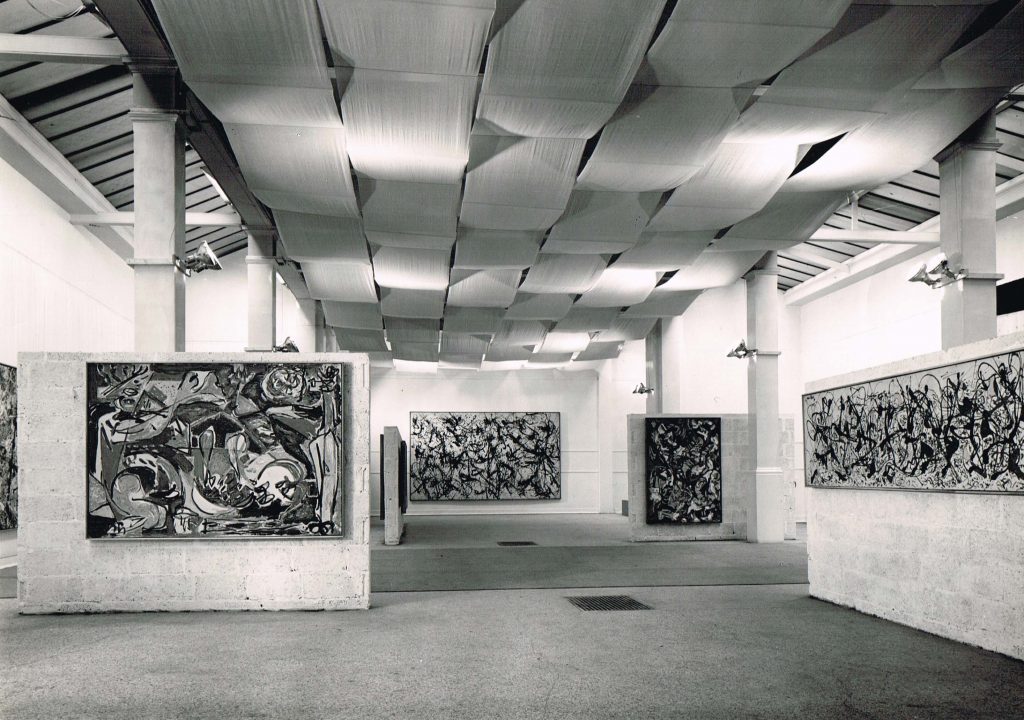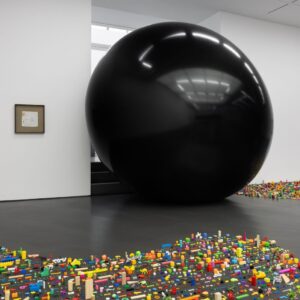Displaying Pollock’s works within a radical exhibition layout, the first UK display of the American Abstract Expressionist provoked bewilderment and excitement. Staging Jackson Pollock presents Pollock’s 5-meter-wide drip painting, returning to the Whitechapel Gallery after six decades, alongside rare archival material. A new exclusive audio interview with British modernist architect Trevor Dannatt (b. 1920, UK), the original show’s designer, provides a fresh perspective on this seminal moment in the history of exhibition-making and Pollock’s legacy.

Jackson Pollock (1912 –1956) Installation view of Jackson Pollock exhibition 1958 Installation view
© Whitechapel Gallery
Trevor Dannat was invited to design a new environment for Pollock’s works by the Whitechapel Gallery’s then Director Bryan Robertson (1925 – 2002) in 1958. The original exhibition consisted of 58 paintings created during Pollock’s ‘drip period’ between 1947 and 1950, during which the painter became internationally famous. Dannatt’s constructivist approach to the display transformed the salon style gallery into a theatrical environment. His ‘cohesive architectural ensemble’ included freestanding breezeblock walls, black panels, and an undulating ceiling of suspended fabric. This audacious layout enabled a dynamic encounter with the paintings from numerous angles, immersing visitors in a powerful encounter with painting as environment.
The new interview featured in Staging Jackson Pollock reveals Dannatt’s architectural approach to creating the display and his collaborative process with Robertson. The pair travelled together to Berlin to the exhibition, which was travelling to Europe from New York’s Museum of Modern Art after Pollock’s untimely death. MoMA’s International Programme was rumoured to be sponsored by the Central Intelligence Agency (CIA) as part of a raft of cultural initiatives serving as soft power in the Cold War. Abstract Expressionism was used to emblematise freedom of expression, countering the communist ideology of the Soviet Union.
Staging Jackson Pollock 4 September 2018 – 24 March 2019 Gallery 5, Free Entry

Staging Jackson Pollock 4 September 2018 –24 March 2019 Summertime: Number 9 Oil paint, enamel paint and commercial paint on canvas ©Tate, London 2018



